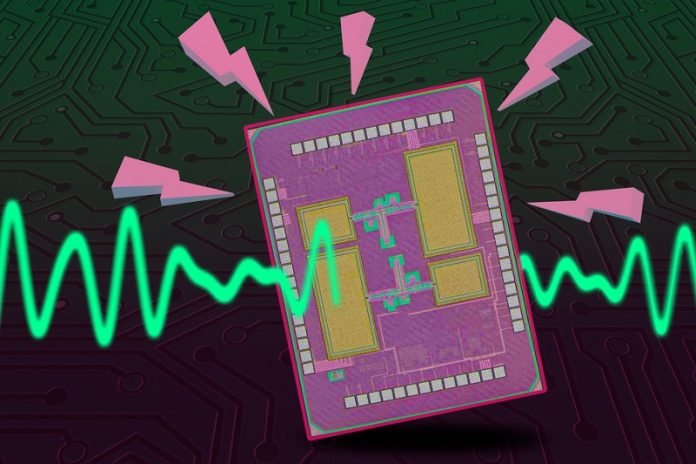
Scientists at the Massachusetts Institute of Technology (MIT) have developed a tiny wake-up receiver for Internet of Things (IoT) devices that could make nearly any object trackable.
The small-sized sensors have tiny batteries, which are often nearly impossible to replace, so engineers incorporate wake-up receivers to keep devices in low-power “sleep” mode when not in use, preserving battery life.
The new wake-up receiver developed by the MIT researchers is less than one-tenth the size of previous devices and consumes only a few microwatts of power.
It also includes a low-power, built-in authentication system to protect the device from a certain type of attack that could quickly drain its battery.
Wake-up receivers are usually built on the centimeter scale since their antennas must be proportional to the size of the radio waves they use to communicate.
Instead, the MIT team built a receiver that uses terahertz waves, which are about one-tenth the length of radio waves. Their chip is barely more than one square millimeter in size.
They used their wake-up receiver to demonstrate effective wireless communication with a signal source several meters away, showcasing a range that would enable their chip to be used in miniaturized sensors.
The new device could be incorporated into microrobots that monitor environmental changes in areas that are too small or hazardous for other robots to reach.
Also, since the device uses terahertz waves, it could be utilized in emerging applications, such as field-deployable radio networks that work as swarms to collect localized data.
The use of terahertz frequencies allowed the team to make an antenna that is only a few hundred micrometers on each side, which is a very small size. This means they can integrate these antennas into the chip, creating a fully integrated solution. Ultimately, this enabled them to build a very small wake-up receiver that could be attached to tiny sensors or radios.
Terahertz waves, found on the electromagnetic spectrum between microwaves and infrared light, have very high frequencies and travel much faster than radio waves. They travel in a more direct path than other signals, which makes them more secure.
However, the waves have such high frequencies that terahertz receivers often multiply the terahertz signal by another signal to alter the frequency, a process known as frequency mixing modulation.
Terahertz mixing consumes a great deal of power. Instead, the team developed a zero-power-consumption detector that can detect terahertz waves without the need for frequency mixing. The detector uses a pair of tiny transistors as antennas, which consume very little power.
The researchers added an authentication block that utilizes an algorithm to randomize the device’s token each time, using a key that is shared with trusted senders.
This key acts like a password — if a sender knows the password, they can send a signal with the right token. The researchers do this using a technique known as lightweight cryptography, which ensures the entire authentication process only consumes a few extra nanowatts of power.
The researchers tested their device by sending terahertz signals to the wake-up receiver as they increased the distance between the chip and the terahertz source. They achieved 5- to 10-meter longer distance demonstrations than others, using a device with a very small size and microwatt level power consumption.
In the future, the researchers want to tackle the problem of signal degradation. If they can find a way to maintain signal strength when receiver chips move or tilt slightly, they could increase the performance of these devices.
They also want to demonstrate their wake-up receiver in very small sensors and fine-tune the technology for use in real-world devices.
Overall, the researchers have developed a rich technology portfolio for future millimeter-sized sensing, tagging, and authentication platforms, including terahertz backscattering, energy harvesting



